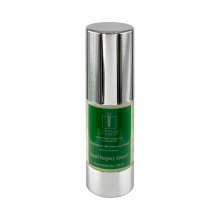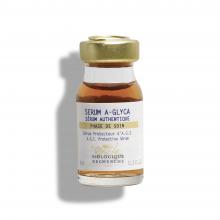Glycation
Certain substances that contribute to the aging process can be avoided. An excellent example of this is tobacco tar. However, other contributory substances are not as easily avoided as they are critical parts of the metabolism. The best example of this is glucose.
The most common carbohydrate found in food is glucose; it is the primary structural unit of starch and a component of sucrose (table sugar). The bulk of the energy we get from eating cereals, bread, pasta, and many other common foods is glucose. One of the key physiological measurements is the level of sugar found in the bloodstream. Glucose levels are critical because it is the primary fuel for the central nervous system. If the glucose level of the blood drops below a certain level for long enough, then consciousness will be lost. This can lead to a comatose state and even death. Raised levels of this sugar, such as those that occur in diabetes, can also be dangerous. The body maintains a complex system for maintaining sugar levels in the blood at a safe level. The liver stores a reserve of glucose in the form of glycogen (which is a polymer that is similar to starch). The liver can also make its own sugar by converting protein to glucose if need be. Starvation causes the body to slowly break down muscle protein to provide "fuel" to the central nervous system.
Glucose is always present in the bloodstream, whether or not it is present in our food. It is a crucial cellular fuel in the body. Unfortunately, this sugar can also cause damage to the body as well as energize it. This damage is an adverse reaction with DNA and proteins. This negative reaction is called glycation or the Maillard reaction. In glycation, enzymes fail to work at their normal level of effectiveness, thus causing glycated proteins to lose their shape, become insoluble or unstable. A great example of this is cataracts which occur when protein glycation takes place. In addition, the glycation process lowers the level of solubility of the lens proteins, leading to a loss of transparency in the lens.
Products with Trylagen limiting glycation
Complications caused by diabetes are an extreme example of the damage that can be caused by glycation and cross-linking. The main clinical symptom of diabetes is a raised level of glucose present in the bloodstream. Because the rate of chemical reactions is directly proportional to the concentration of the reagent, the more raised the sugar level, the more increased the level of glycation and cross-linking is. As a result, cross-linked arterial walls become brittle, less able to pulse, and the capillaries become less open to the permutation of nutrients and oxygen. The result is the loss of sufficient blood flow to the tissues, leading to slow healing of wounds, nerve damage, and the formation of ulcers. In addition, most tissues, including the nerves, retina, and kidney, allow glucose to penetrate without the presence of insulin; when this happens, the damage is particularly severe. These tissues are particularly severely affected by high blood glucose levels, which explains why kidney failure, blindness, and nerve damage (neuropathy) are the most common complications of diabetes.
Research shows that the most commonly found type of glucose cross-linking that occurs in aging tissues is glucosepane. Glucosepane is a chemical bridge created when glycated proteins react with specific amino acids from other proteins. There are generally twice as many glucosepane cross-links in people with diabetes as non-diabetics of the same age range. The levels of glucosepane also correlate with the incidence of age-related diseases.
Other probable cross-linking causes include cigarette smoke, heavy metals, peroxides, UV radiation, and acetaldehyde (a byproduct of alcohol). Free radicals can also promote and accelerate cross-linking and can even be cross-linkers themselves.
How can cross linking be made minimal or reduced? The best way to eliminate cross-linking is to avoid exposure to the environmental factors that cause it. For example, use good sunscreen, spend minimal amounts of time in the sun, reduce alcohol consumption, and don't smoke. In addition, by keeping your antioxidant defenses healthy, particularly during stressful times, you can minimize or reduce the risk of cross-linking.
Formulas with Silk tree extract preventing collagen glycation
Maintaining good carbohydrate tolerance can be one of the most important steps that you can take to minimize glycation and cross-linking. High levels of carbohydrate tolerance is one of the most common features found in the metabolic processes of people over 100 and could very well be the reason for their long lifespan. A glycated hemoglobin test (HbA1c test) can determine how well your body processes carbohydrates. There is an over-the-counter version of the HbA1c test, although this may be less accurate. The HbA1c test determines the amount of your hemoglobin that has reacted with glucose and therefore is also a good way of determining the levels of glycation and cross-linking in the body. HbA1c also corresponds with the average level of blood sugar in the three months before the test. Healthy people maintain an average HbA1c range of 4% to 5.9%. Some studies have shown that the lower part of this range is optimal for promoting health and longevity. Above-average readings in the HbA1c range mean that there should be a lifestyle change to improve higher carbohydrate metabolism levels. This can include exercise, weight loss, and a diet based on foods with low glycemic levels and taking supplements that lower the blood sugar levels.
What treatments have been developed to stop or reverse glycation and cross-linking? Carnosine has been shown to slow the process of cross-linking in animals. Carnosine is a particularly effective inhibitor of protein to protein and DNA to protein cross-linking different aldehydes, including glucose, cause that. However, it has yet to be seen if people taking Carnosine supplements will see an increase in longevity. Vitamin derivatives, including a fat-soluble form of B1 known as benfotiamine as well as B6 (in the form of pyridoxamine), are suitable inhibitors of certain kinds of glycation and cross-linking. However, their long-term effects on humans remain unclear. Research is being done on the use of serrapeptidase and bromelain (both of which are protease supplements) to break up existing protein to protein cross-links. Other scientists are trying to determine a specific supplement that is capable of preventing or reversing glucosepane cross-links.






